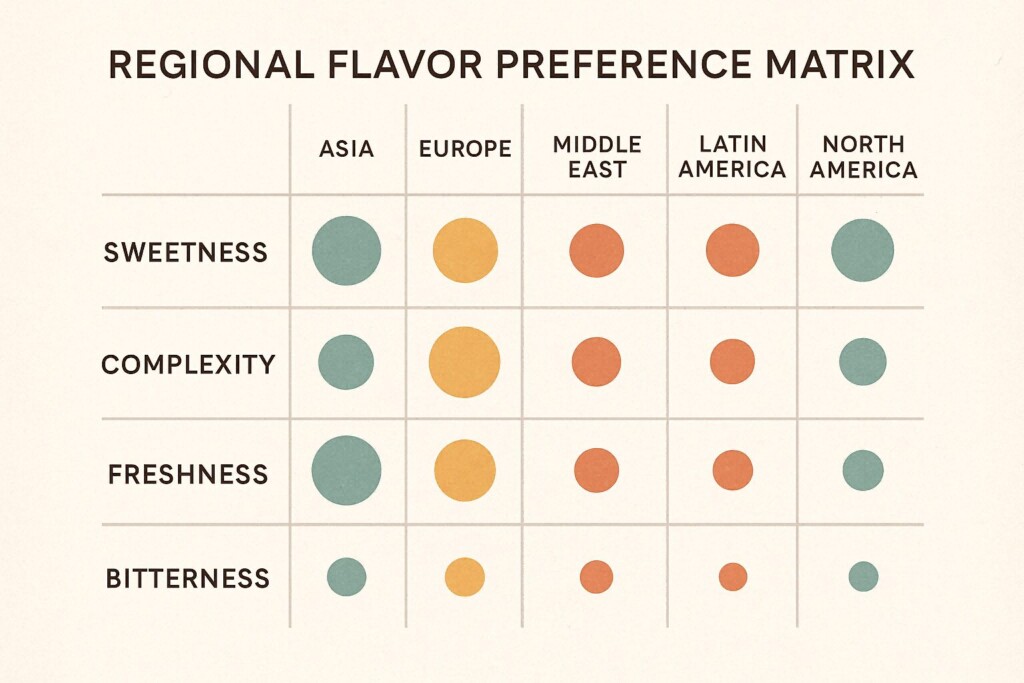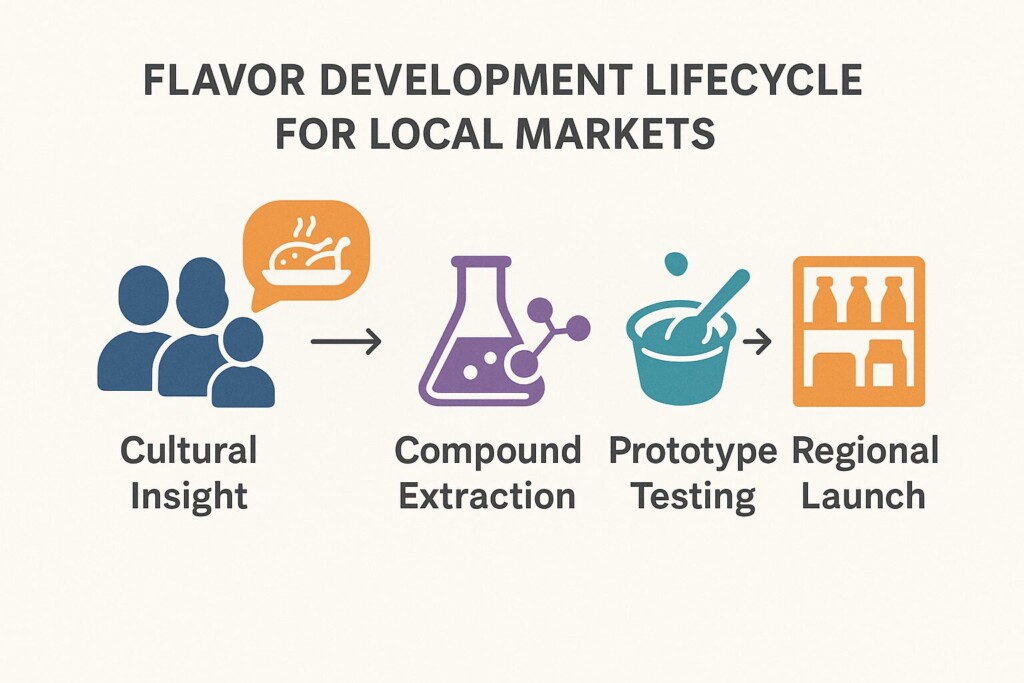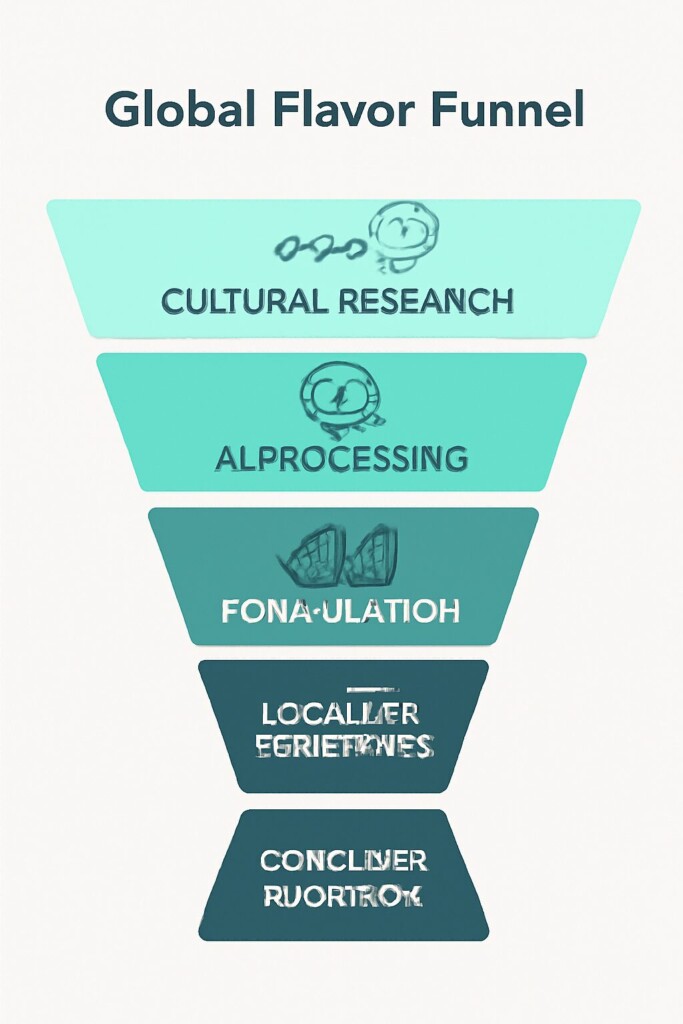How Cultural Taste Shapes the Future of Vaping Experiences
Keywords: regional vape flavors, cultural taste vape, localized flavoring

Global Flavor Preference Map
As vaping evolves from a novelty to a sophisticated global lifestyle, the expectations for taste quality have expanded beyond conventional tobacco and menthol. Consumers now seek authentic, culturally resonant flavors that align with their regional culinary traditions and sensory expectations. This evolution demands that vape brands and flavor manufacturers pay close attention to regional vape flavors, cultural taste patterns, and the art and science of localized flavoring.
Creating flavors that evoke familiarity, nostalgia, or cultural identity isn’t just marketing—it’s neuroscience. It involves understanding how a culture defines “refreshing,” “sweet,” or “complex” through the lens of local cuisine, climate, and sensory heritage.
This article explores the technical foundations and commercial value of designing vape flavors tailored to regional palate preferences, with real-world examples, data-backed insights, and methods used by leading manufacturers such as CUIGUAI Flavoring.
The early vape market was dominated by universally accepted flavors like vanilla custard, tobacco, strawberry, and mint. While effective in establishing baseline consumer acceptance, these flavors rarely offered cultural specificity. As the market matured and expanded globally, consumer expectations shifted toward culturally relevant, personalized taste experiences.
Drivers of Localization in Vape Flavoring:
According to a 2024 consumer insight study from VapeForward Research, 72% of surveyed users in emerging vape markets expressed preference for region-specific flavors over globalized options.
Flavor perception is not a purely biological process—it is deeply embedded in cognitive memory, environmental conditioning, and cultural lexicons. What is perceived as “fresh” in one culture (e.g., peppermint in the US) may be interpreted as overpowering or even medicinal in another (e.g., Japan, where citrus is often linked with freshness).
Understanding these psychological factors is critical to engineering vape flavors that don’t just taste good—they feel right.
Cultural taste mapping is the practice of identifying dominant and latent flavor preferences across demographics. Below is a generalized mapping based on current market studies and culinary data.
| Region | Dominant Flavor Traits | Examples | Avoid in Formulation |
| East Asia | Floral, fruity, light teas | lychee, osmanthus, oolong | burnt sugar, strong dairy |
| South Asia | Spicy, creamy, herbal | saffron milk, cardamom, kulfi | menthol-heavy profiles |
| Middle East | Nuts, florals, spices | rose, pistachio, date | sour or overly fruity |
| Western Europe | Baked goods, herbs, berries | almond tart, basil raspberry | tropical candy |
| Latin America | Tropical fruit, creamy desserts | passionfruit mousse, dulce de leche | bitter profiles |
| North America | Sweet mint, candy, dessert | iced vanilla, root beer, strawberry cotton candy | bitter herbal notes |

Regional Flavor Preference Matrix
Flavor formulation tailored to regional tastes requires quantitative and qualitative R&D approaches:
These tools allow formulation teams to go beyond guesswork and base their choices on measurable sensory alignment.
In China, subtlety and elegance in flavor are preferred. CUIGUAI’s “Jasmine Oolong Breeze” combines delicate jasmine lactones with roasted oolong volatiles, resulting in a flavor that mirrors traditional tea ceremony ambiance.
Brazilian consumers favor tropical vibrancy layered over creamy bases. CUIGUAI’s “Amazon Sunrise” captures guava and cupuaçu with a trace of vanilla milk. Cooling agents are used sparingly to avoid masking the fruit.
For the Turkish market, CUIGUAI developed a vape inspired by lokum (Turkish delight), balancing rose oxide and sweet almond with a touch of musk.

Flavor Development Lifecycle for Local Markets
Localized flavoring must also meet stringent technical standards:
CUIGUAI Flavoring offers modular, lab-verified flavor bases ready for localization. Key features include:
Example Product: “Cultural Fusion Series” offers bases like:
AI technologies now enable rapid, predictive flavor design:
Future vape products may even feature adaptive e-liquid cartridges that recommend regional blends based on location data.
Localized vape flavoring isn’t just an option—it’s the next industry standard. Consumers crave identity-affirming experiences, and vape products that reflect cultural nuance will dominate the future landscape. By combining sensory science, ethnographic research, and AI innovation, companies can deliver truly resonant experiences.
CUIGUAI Flavoring continues to lead this charge, offering data-informed, region-ready flavor systems built for tomorrow’s global market.

Global Flavor Funnel
Author: R&D Team, CUIGUAI Flavoring
Published by: Guangdong Unique Flavor Co., Ltd.
Last Updated: Jun 18, 2025
The business scope includes licensed projects: food additive production. General projects: sales of food additives; manufacturing of daily chemical products; sales of daily chemical products; technical services, technology development, technical consultation, technology exchange, technology transfer, and technology promotion; biological feed research and development; industrial enzyme preparation research and development; cosmetics wholesale; domestic trading agency; sales of sanitary products and disposable medical supplies; retail of kitchenware, sanitary ware and daily sundries; sales of daily necessities; food sales (only sales of pre-packaged food).
Copyright ©Guangdong Unique Flavor Co., Ltd.All Rights Reserved. Privacy Policy